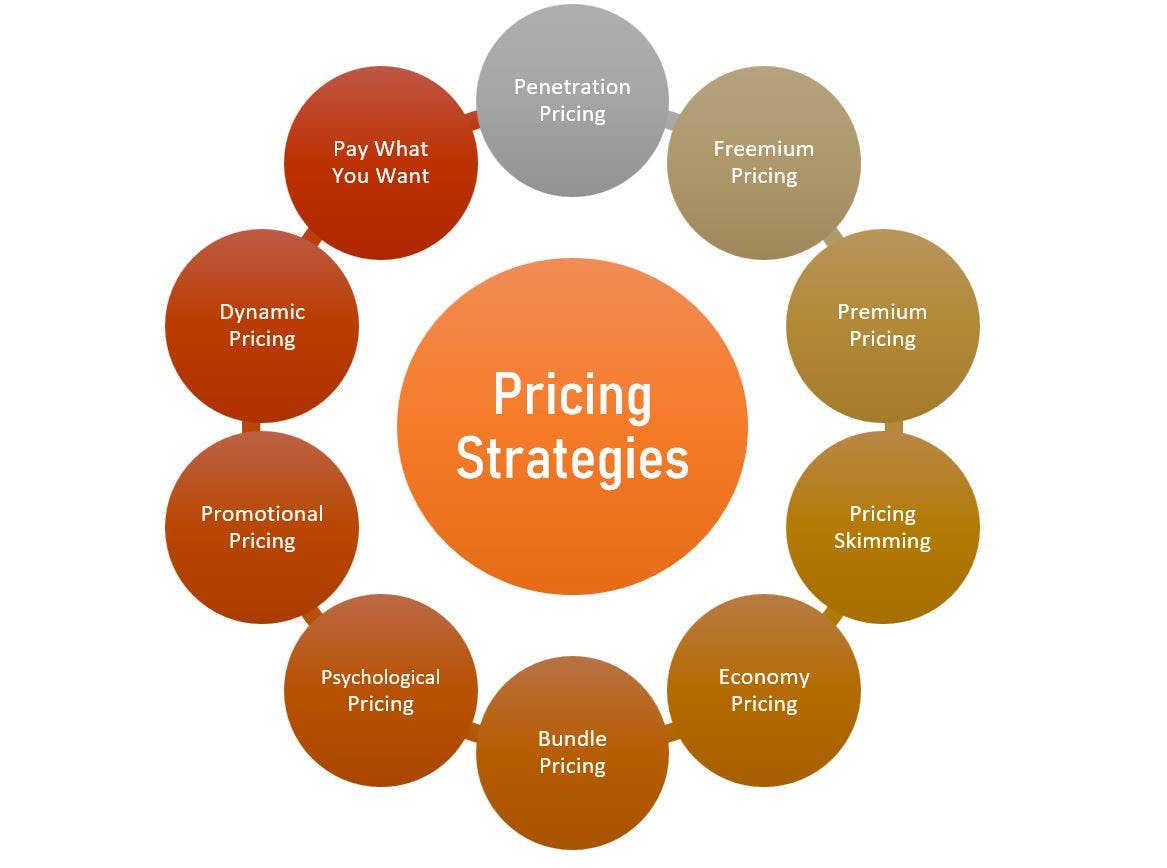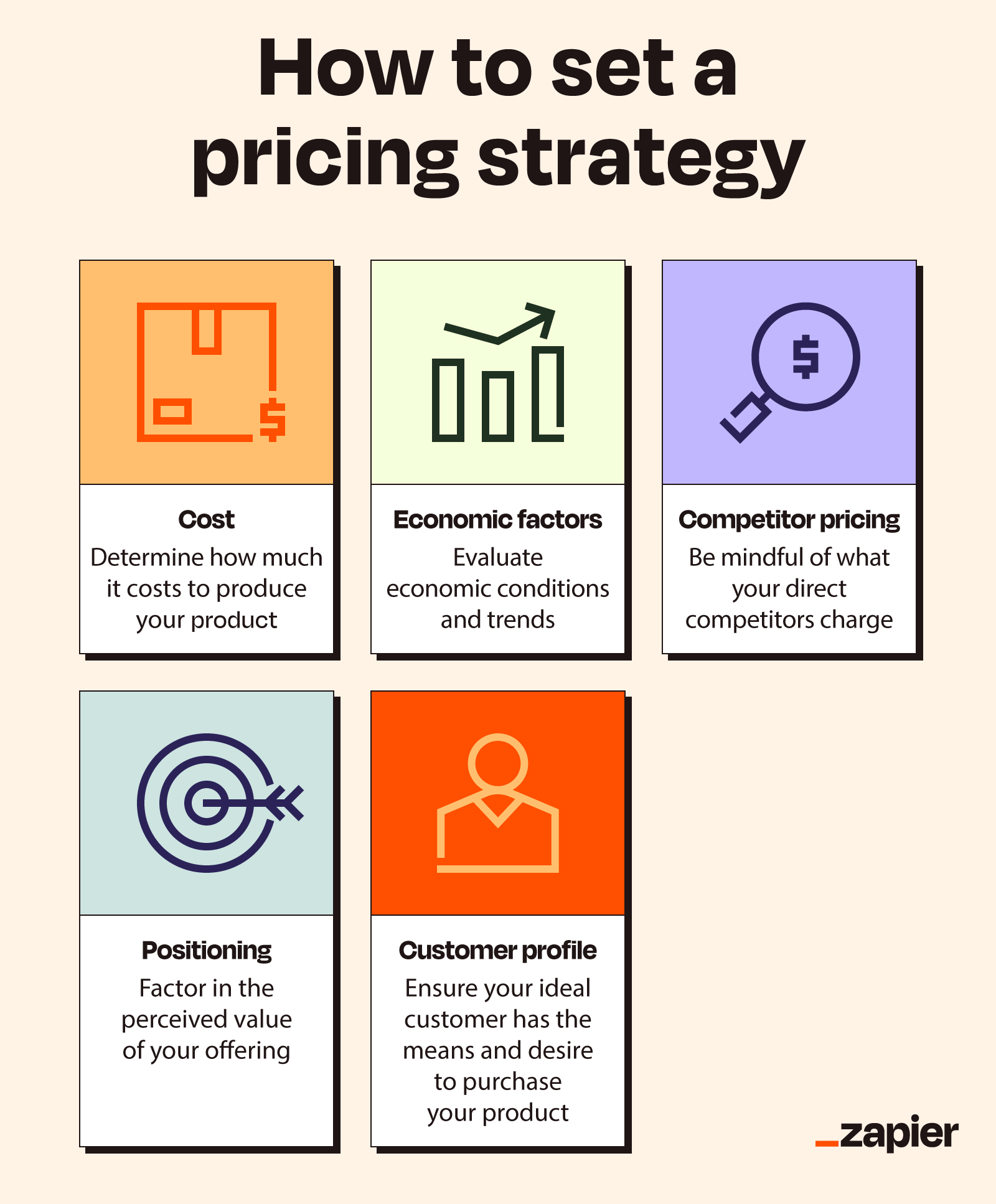Recognizing Prices Strategies: A Guide to Boosting Competition
In a progressively affordable landscape, understanding pricing approaches is crucial for businesses aiming to improve their market setting. Different prices designs, such as value-based and cost-plus methods, can substantially influence exactly how a company interacts its value proposition. Comprehending rival prices and the psychological facets that influence customer habits can develop a nuanced approach to pricing that reverberates with target audiences. Nevertheless, the execution of these strategies is not straightforward-- there are essential considerations that could determine success or failing. What elements should be focused on to make sure effectiveness in this dynamic environment?
Relevance of Prices Techniques
In the affordable landscape of business, the significance of pricing strategies can not be overstated. Rates acts as an essential bar for organizations, influencing both market positioning and customer assumption. A well-defined rates method can improve success, drive sales, and develop a competitive edge.

Understanding consumer habits is necessary in crafting rates methods. Insights into rate sensitivity, viewed value, and affordable offerings allow organizations to adjust their prices models appropriately. Additionally, normal evaluation of pricing effectiveness is required to react to market dynamics and customer trends.
Inevitably, a durable pricing approach is essential not only for profits generation but likewise for long-term organization practicality. It forms brand name identification, influences client commitment, and plays a critical duty in the overall advertising and marketing strategy. Because of this, organizations should spend time and sources in developing and improving their prices approaches to grow in an ever-evolving marketplace.
Kinds Of Pricing Designs
How operate establish the most reliable means to price their solutions or items? The answer hinges on recognizing numerous prices models, each fit to various market conditions and business objectives.
One common design is cost-plus prices, where a set percentage is added to the total expense of production. This method guarantees that all expenses are covered while producing an earnings. Alternatively, value-based pricing focuses on the perceived worth of the product to the client, allowing services to charge a premium based on consumer need and contentment.
An additional approach is vibrant rates, commonly made use of in industries such as travel and hospitality. This model adjusts costs in real-time based upon market demand, competitor prices, and various other exterior aspects. Penetration pricing is also significant, where organizations originally established lower rates to go into an open market and gain market share, later raising prices when a client base is developed.
Finally, skimming rates includes establishing high initial prices for ingenious or brand-new items, profiting from very early useful source adopters before lowering costs over time. Comprehending these models allows companies to tactically place themselves in the marketplace, aligning their pricing methods with their overarching objectives.

Analyzing Competitor Prices
Comprehending rival pricing is an important element of creating a reliable prices strategy. Organizations needs to conduct extensive evaluations of their rivals' pricing frameworks to recognize market positioning, analyze prospective threats, and uncover opportunities for distinction. This involves collecting information on rivals' prices, promotional strategies, and any kind of incentives or discounts they supply.
Assess their pricing versions, consisting of any tiered rates systems, subscription costs, or bulk discounts - Pricing Strategy. Recognizing the reasoning behind these prices methods can provide understandings right into customer behavior and choices.
Think about the ramifications of rival prices on your value recommendation. If rivals offer similar products at reduced rates, you might require to emphasize unique marketing factors or boost consumer service to validate your prices.
Inevitably, assessing competitor pricing not only notifies pricing decisions but additionally aids businesses remain competitive in a constantly developing market landscape.
Mental Pricing Techniques
Mental rates strategies take advantage of consumer psychology to influence acquiring decisions and improve the visit here perceived worth of products. These methods are grounded in the understanding of how customers refine valuing info and the emotional feedbacks that accompany it. One common technique is appeal pricing, where costs are established just listed below a rounded number, such as $9.99 instead of $10.00. This method exploits the propensity of customers to perceive prices as lower than they actually are, motivating impulse purchases.
One more reliable technique is prestige prices, where higher rates are connected with greater quality. This technique attract customers' need for status and exclusivity, placing items as premium offerings. In addition, bundling products with each other at an affordable price can produce a feeling of worth, prompting clients to acquire greater than they at first planned.
Deficiency pricing, which emphasizes minimal schedule or time-sensitive offers, can likewise activate urgency, pressing customers to act promptly. By understanding and applying these mental rates techniques, companies can successfully form customer understandings, drive sales, and ultimately improve competitiveness in the marketplace.
Implementing and Adjusting Techniques

As soon as data is collected, companies need to evaluate their pricing designs versus existing market problems. This may include taking on vibrant rates strategies that enable real-time adjustments based on supply and demand changes. Services ought to additionally take into consideration segmenting their market additional hints to customize prices for different customer groups, boosting perceived value and driving sales.
Frequently assessing rates approaches is essential. This can be accomplished through A/B testing or customer feedback, which offers understandings into the efficiency of present pricing. Additionally, companies ought to continue to be versatile to adapt to unanticipated modifications, such as economic recessions or emerging competitors.
Final Thought
To conclude, effective pricing approaches function as a crucial component for businesses aiming to boost competition in a fluctuating market. By leveraging different pricing models, assessing rival prices, and using emotional strategies, firms can better position themselves and connect value to customers. Additionally, frequently adjusting these approaches in feedback to market dynamics and consumer behavior is essential for making certain long-lasting sustainability and profitability, inevitably driving sales and fostering client commitment.
In a progressively competitive landscape, understanding pricing methods is important for services aiming to boost their market position. Comprehending rival pricing and the mental aspects that influence customer actions can create a nuanced technique to rates that reverberates with target audiences.Comprehending rival pricing is a crucial facet of formulating a reliable prices technique. Assess their pricing designs, consisting of any tiered rates systems, subscription charges, or mass price cuts. By leveraging numerous pricing versions, examining competitor rates, and using psychological techniques, companies can better place themselves and connect worth to customers.
Comments on “How to Execute a Value-Based Pricing Strategy for Optimum Influence”